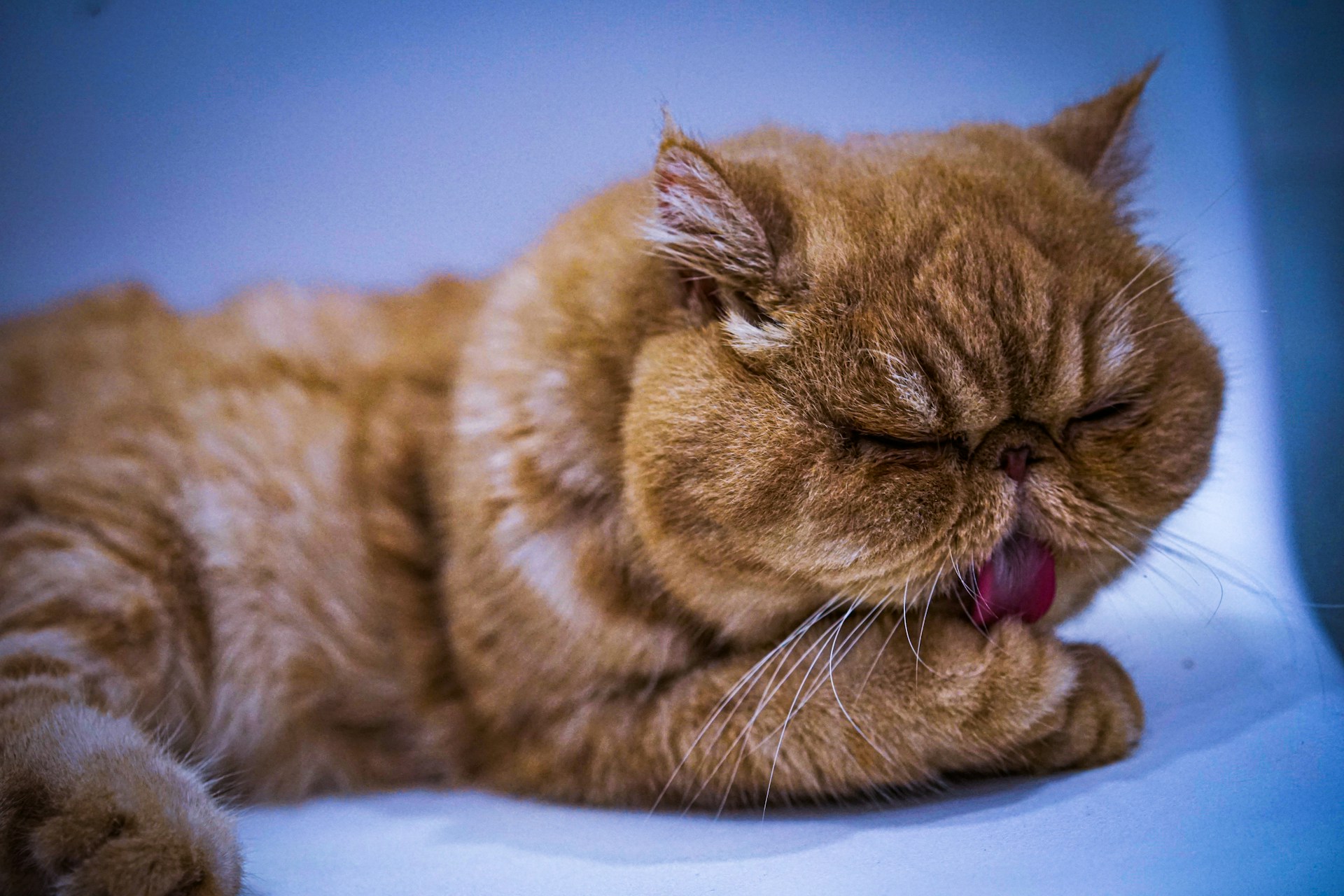Signs of Stress in Cats
Cats are sensitive creatures, and stress can show up in subtle or obvious ways. Recognizing these signs is the first step to helping your cat feel better. Common indicators include hiding more than usual, excessive grooming, changes in appetite, or aggression. At Friends With Tail, we know understanding cat stress relief starts with spotting these behaviors early.
Other signs include litter box avoidance, excessive meowing, or a tucked tail. Your cat might also seem restless, pacing or scratching more than normal. Each cat is unique, so compare their current behavior to their usual habits. For example, a social cat suddenly avoiding you could be stressed. Keeping a journal of these changes helps you pinpoint triggers and share details with a vet if needed.
Common Causes of Feline Anxiety
Stress in cats often stems from changes or discomfort in their environment. Knowing the causes helps you address the root of their anxiety. Here are some common triggers:
- Environmental Changes: Moving, new furniture, or renovations can unsettle cats, who thrive on routine.
- New Pets or People: Introducing a dog, cat, or baby can spark territorial stress or fear.
- Loud Noises: Fireworks, thunderstorms, or construction sounds can frighten cats, leading to hiding or agitation.
- Lack of Stimulation: Boredom from limited play or exploration can cause stress, especially in indoor cats.
- Health Issues: Pain or illness, like urinary problems, can manifest as stress. Always rule out medical causes with a vet.
Observe when stress signs appear to identify triggers. For instance, if your cat hides during loud noises, noise reduction strategies can help. Understanding these causes guides you toward effective solutions for feline anxiety.
Creating a Calming Environment
A peaceful home can significantly reduce your cat’s stress. Here’s how to create a soothing environment:
- Provide Safe Spaces: Set up cozy hiding spots, like a covered cat bed or a box with blankets, where your cat can retreat.
- Maintain Routine: Feed, play, and interact at consistent times. Predictability helps cats feel secure.
- Reduce Noise: Use white noise machines or soft music to mask loud sounds. Close windows during noisy events like storms.
- Offer Vertical Space: Cat trees or shelves let your cat observe their surroundings from a safe height, boosting confidence.
- Use Pheromone Products: Plug-in diffusers or sprays with synthetic feline pheromones mimic calming scents, reducing anxiety.
A calm environment supports your cat’s emotional well-being. Experiment with these ideas to find what soothes your cat best. For more feline anxiety tips, check out related behavior articles.
Using Toys and Comfort Items
Toys and comfort items distract and soothe stressed cats. Here’s how to use them effectively:
- Interactive Toys: Feather wands or laser pointers engage your cat, burning energy and reducing stress. Play for 10–20 minutes daily.
- Puzzle Feeders: Treat-dispensing toys stimulate your cat’s mind, keeping them focused and less anxious.
- Comfort Items: Soft blankets or toys with your scent provide familiarity. Some cats love items warmed slightly for extra coziness.
- Catnip Toys: Catnip can relax many cats. Offer a catnip-stuffed mouse, but use it sparingly to maintain its effect.
- Rotate Toys: Swap toys every few days to keep them exciting. Novelty prevents boredom and maintains engagement.
These items give your cat positive outlets for stress. Watch how your cat responds to different toys to tailor your approach. For more ideas, visit Friends With Tail.
When to Consult a Vet
If your cat’s stress doesn’t improve after trying these tips, or if you notice severe signs like refusal to eat or aggression, consult a vet. Stress can worsen health issues, and medical problems like pain or thyroid issues can cause anxiety-like behaviors. A vet can run tests to rule out illness and suggest solutions, such as medication or supplements for severe cases. A certified cat behaviorist can also offer tailored advice for complex issues, like extreme fear or destructive behavior.
Don’t hesitate to seek help if you’re unsure. Professional support can make a big difference in your cat’s happiness. Regular checkups also prevent stress-related issues by catching problems early.
Final Thoughts
Calming a stressed cat takes patience and understanding, but with the right approach, you can help them feel safe and happy again. Recognize their stress signs, address triggers, and create a soothing environment to ease their anxiety. Toys, routine, and comfort items play a big role, while vet support is there when needed. Your efforts will lead to a more relaxed cat and a stronger bond. Have you tried any stress-relief tips with your cat? Share them in the comments, or explore more resources to keep your feline friend thriving!

